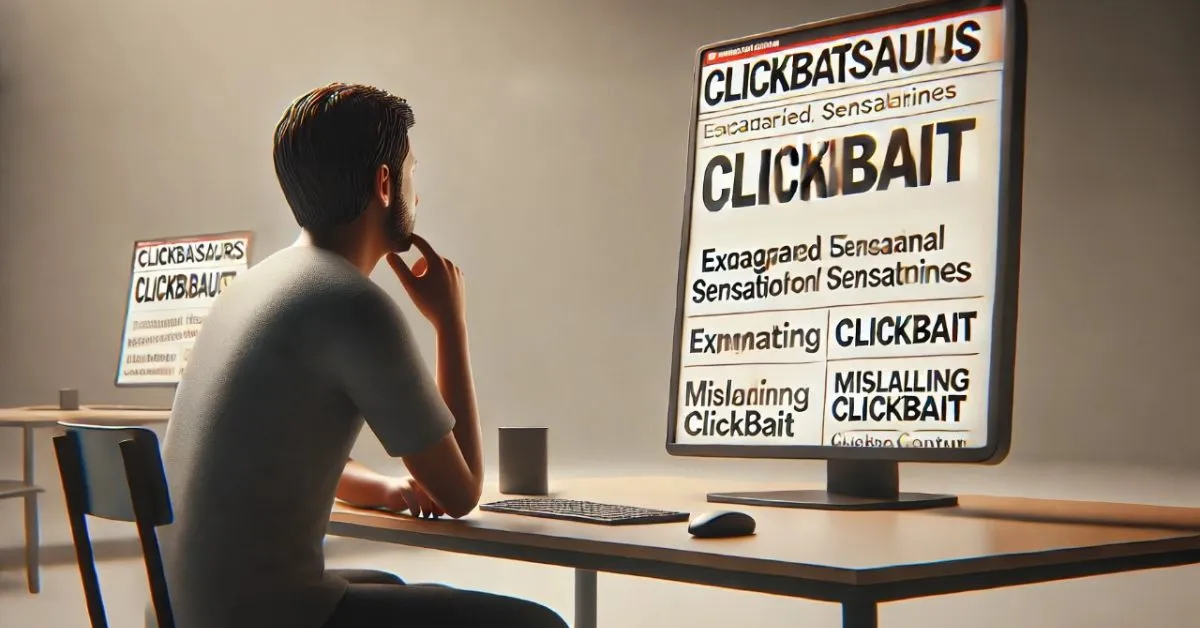Uncovering the Mystery of Clickbaitosaurus: Why We Can’t Resist It
Introduction
Ever been lured into clicking on a headline only to find yourself utterly disappointed by the content? You’re not alone! Welcome to the world of clickbaitosaurus, a cunning creature in the digital jungle, preying on your curiosity. But what exactly is clickbaitosaurus, and why is it so powerful at capturing our attention?
In this post, we’ll dive deep into what clickbaitosaurus is, why we fall for it, and how to avoid getting snared in its click-trapping jaws. Ready to explore? Let’s go!
What is Clickbaitosaurus?
The term clickbaitosaurus isn’t something you’ll find in a science textbook. It’s a playful nickname for the evolution of clickbait—those catchy, misleading headlines that get you to click, but rarely deliver on their promises. Just like a prehistoric creature, the clickbaitosaurus has evolved to adapt to modern digital environments, becoming harder to resist.
Clickbaitosaurus has one goal: get your click, at any cost. It could be a dramatic headline, a shocking image, or an outrageous claim. Once it has you, it leads you to underwhelming content that’s usually a far cry from what you expected.
How Clickbaitosaurus Tricks You
Clickbaitosaurus is a master of manipulation, and here are some of its favorite tactics:
1. Outrageous Claims
You’ll see titles like, “You Won’t Believe What Happened Next!” or “This Simple Trick Will Change Your Life!” These headlines play with your natural curiosity, making you wonder what juicy secret is hiding behind the link.
2. Sensationalized Numbers
Headlines like, “10 Ways to Lose Weight Overnight—#6 Will Shock You!” use numbers to suggest quick and easy solutions. Adding something like “#6 will shock you” only increases your FOMO (Fear of Missing Out).
3. Emotional Triggers
Clickbaitosaurus loves to stir your emotions, whether it’s anger, joy, or sadness. Titles like, “This Story Will Make You Cry!” or “Why Everyone Hates This Celebrity!” are designed to tug at your heartstrings or outrage you into clicking.
4. Shock Value
The more shocking, the better! Clickbaitosaurus thrives on headlines like, “Man Discovers Hidden City Under His House!” or “Doctors Hate Her for This One Weird Trick.” These outlandish statements grab your attention, even if they aren’t exactly true.
Why Do We Fall for Clickbaitosaurus?
Even though we often know better, clickbaitosaurus still gets us. Why?
1. Curiosity
Humans are naturally curious creatures. When something promises us a secret or an answer to a burning question, we want to find out more—even if deep down, we suspect we’re being misled.
2. FOMO (Fear of Missing Out)
The clickbaitosaurus feeds off our fear of missing out. Headlines like, “Don’t Miss Out on These Secrets!” make you think that by not clicking, you’re losing valuable information or a rare opportunity.
3. Instant Gratification
In a world where everything is fast-paced, clickbaitosaurus knows that we crave quick solutions. Headlines promising instant results or shocking truths play into that desire for instant gratification.
How to Avoid Clickbaitosaurus Traps
It’s hard to resist, but there are ways to outsmart this digital dinosaur. Here are some tips:
1. Pause Before Clicking
Before falling into the clickbaitosaurus trap, take a moment to question the headline. Does it sound too good to be true? Is it vague or sensational? If so, it’s likely bait.
2. Check the Source
Look at where the content is coming from. Trusted, reputable websites are less likely to use clickbait headlines. If the source seems sketchy, it’s probably not worth your time.
3. Read Reviews or Comments
Before clicking, check if there are comments or reviews on the article. Often, other readers will warn you if the content doesn’t live up to the headline.
4. Set Content Boundaries
Install browser extensions that block clickbait sites or use apps that limit your time on social media, where clickbaitosaurus thrives.
The Dark Side of Clickbaitosaurus
Clickbait may seem harmless, but it can have real consequences. Constantly falling for clickbaitosaurus tactics can lead to:
- Time Waste: You spend valuable time clicking through pointless content.
- Misinformation: Some clickbait headlines lead to inaccurate or misleading information.
- Desensitization: Over time, clickbaitosaurus dulls our sensitivity to more meaningful or genuine content.
Conclusion
Clickbaitosaurus is a tricky beast, feeding off our curiosity, emotions, and need for quick answers. But now that you understand how it works, you can be more mindful and avoid falling into its trap. The next time a sensational headline grabs your attention, ask yourself: is this really worth my click?
Remember, the best way to beat clickbaitosaurus is by staying informed, questioning what you see, and always considering the source.
FAQs About Clickbaitosaurus
1. What is clickbaitosaurus?
Clickbaitosaurus is a playful term referring to the manipulative nature of clickbait headlines that lure users into clicking, only to disappoint them with low-quality content.
2. How can I identify a clickbait headline?
Look for exaggerated, sensational, or vague language like “You Won’t Believe What Happens Next!” or “This Will Shock You!” These are common indicators of clickbait.
3. Why do websites use clickbaitosaurus tactics?
Websites use clickbait to drive traffic and increase ad revenue. The more clicks a site gets, the more money it can make, even if the content is low-quality.
4. Is clickbait harmful?
Clickbait can be harmful because it wastes your time, spreads misinformation, and makes it harder to find genuine content.
5. Can I stop clickbait?
While you can’t stop it completely, you can avoid clickbait by being mindful of the headlines you click, checking sources, and using browser extensions that block low-quality sites.
